11 Shrubs With Red Leaves All Year Round

This post follows our research editorial guidelines.

Are you dreaming of a garden that remains vibrant and colorful, even during the grayest winter days? If you’re like many gardening enthusiasts, the quest to find shrubs with red leaves that grace your landscape year-round can be a challenging one.
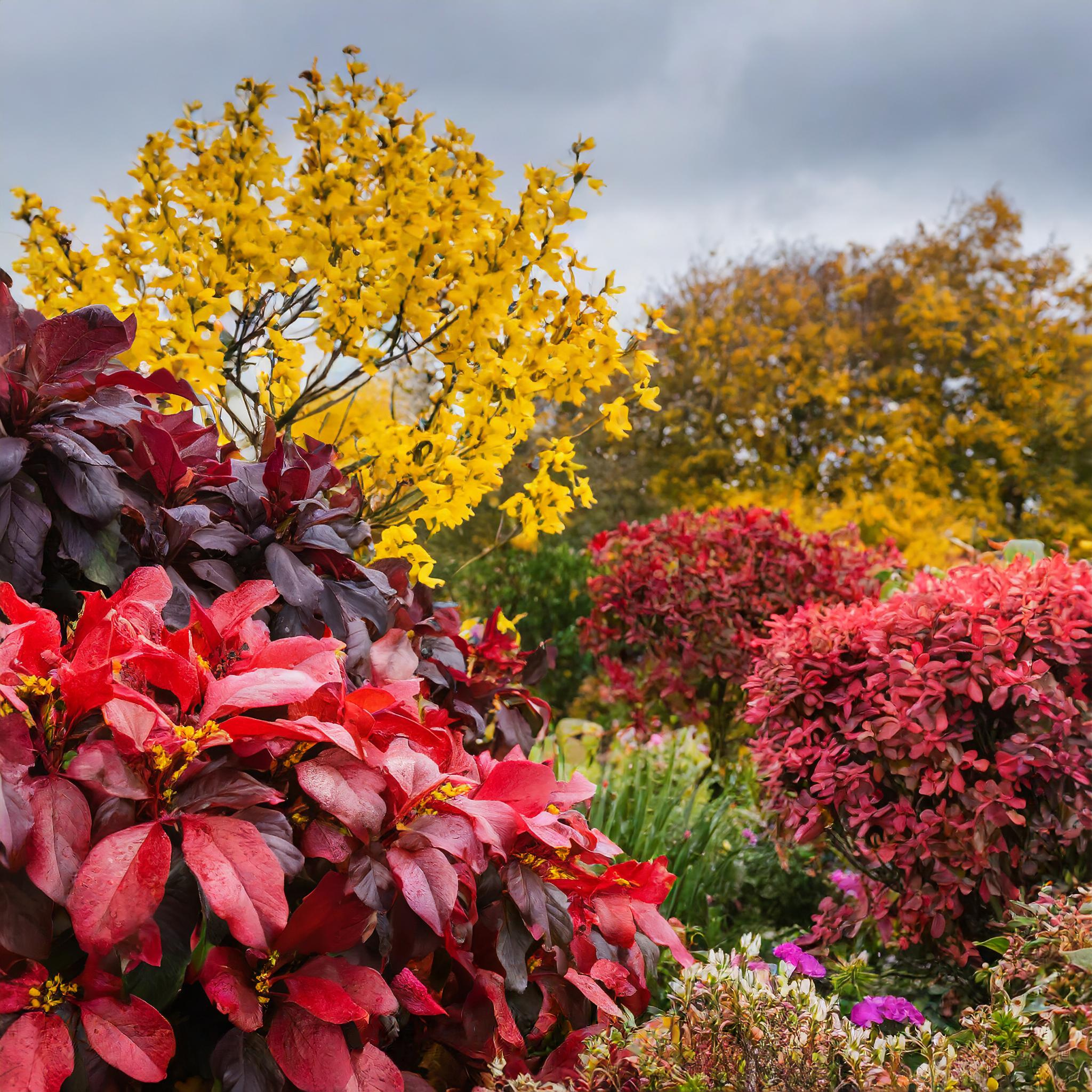
Fear not! I’m here to guide you through this colorful journey to discover more shrubs with red leaves. I’ve got a passion for creating stunning landscapes and using colorful foliage is just one of my many little tricks to create balance and intrigue in gardens all year round.
Quickly Search Through our Shrubs With Red Leafs
1. Sand Cherry (Prunus × cistena)
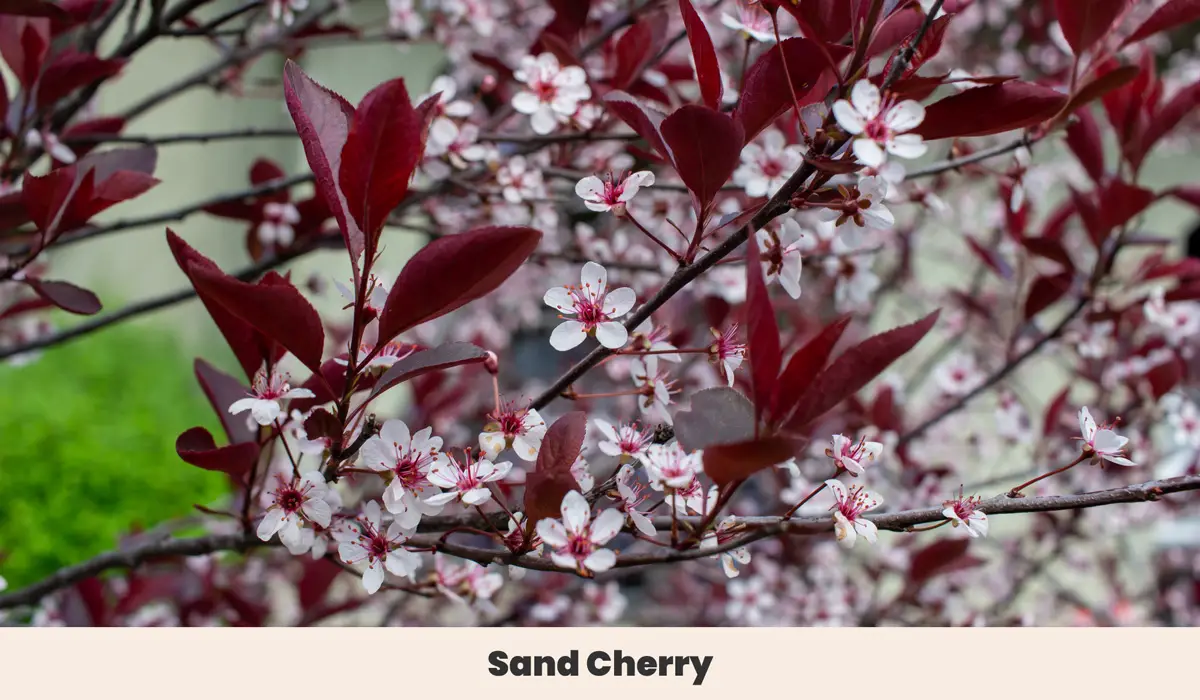
The Sand Cherry is a fascinating plant known not only for its stunning deeply colored foliage but also for its small, edible fruit. The fragrant pink flowers on this shrub combined with deep red to purple leaves add a splash of color to any garden or landscape.
This shrub grows well in a variety of soil types and is low maintenance, making it a popular choice for gardeners. Its compact size and graceful arching branches make it an ideal choice for hedges or as an accent plant.
| Botanical Name: | Prunus x Cistena |
| Growth Rate: | Slow-Moderate: 8-16 inches per year |
| Native Range: | North America |
| Hardiness Zones: | Zone 2-8 |
| Exposure: | Full sun |
| Soil Needs: | Well-draining loam soil rich in organic matter |
2. Japanese Barberry (Berberis thunbergii)
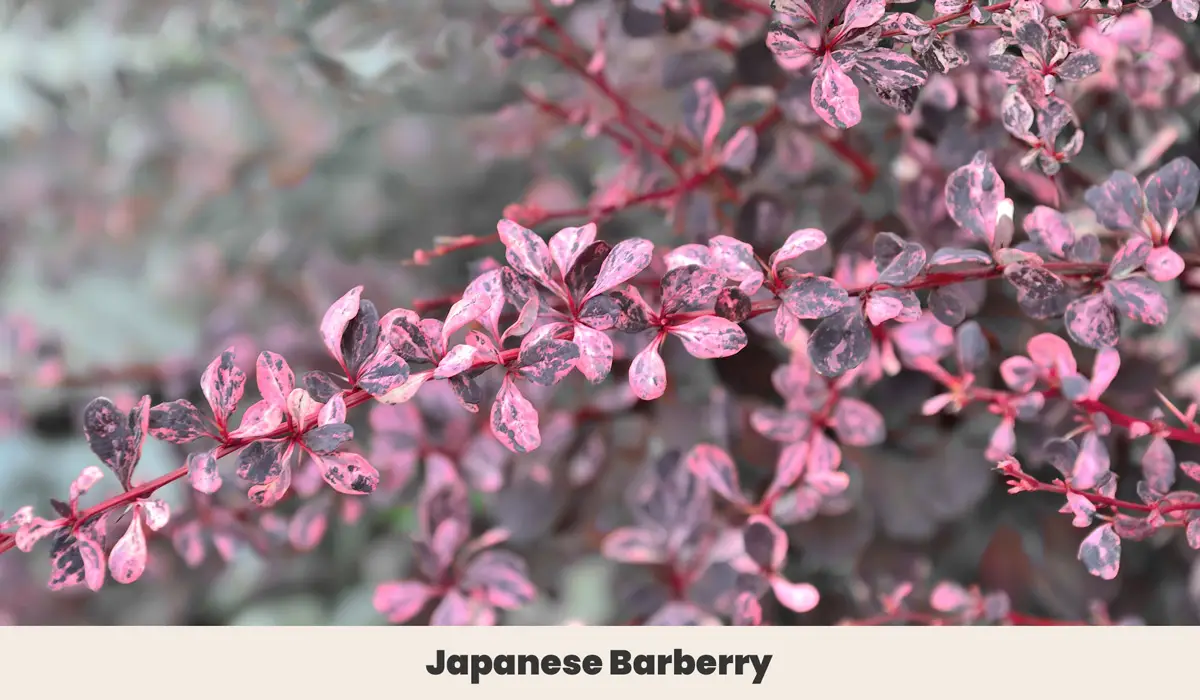
The Japanese Barberry is a hardy shrub that features deep red leaves and small, spiky thorns, making it a great choice for adding texture and color to any garden or landscape.
This shrub is easy to grow and requires minimal maintenance, making it ideal for both novice and experienced gardeners. In the spring, the Japanese Barberry produces small yellow flowers that attract pollinators, and in the fall, its leaves turn a brilliant shade of orange-red.
It’s also a great choice for creating hedges, as its thorns provide added security and protection.
| Botanical Name: | Berberis thunbergii |
| Growth Rate: | Fast: 12-24 inches per year |
| Native Range: | Japan |
| Hardiness Zones: | Zone 4-8 |
| Exposure: | Full sun to partial shade |
| Soil Needs: | Moist chalk, loam or sandy soil |
3. Spiraea Double Play Big Bang (Spiraea x)
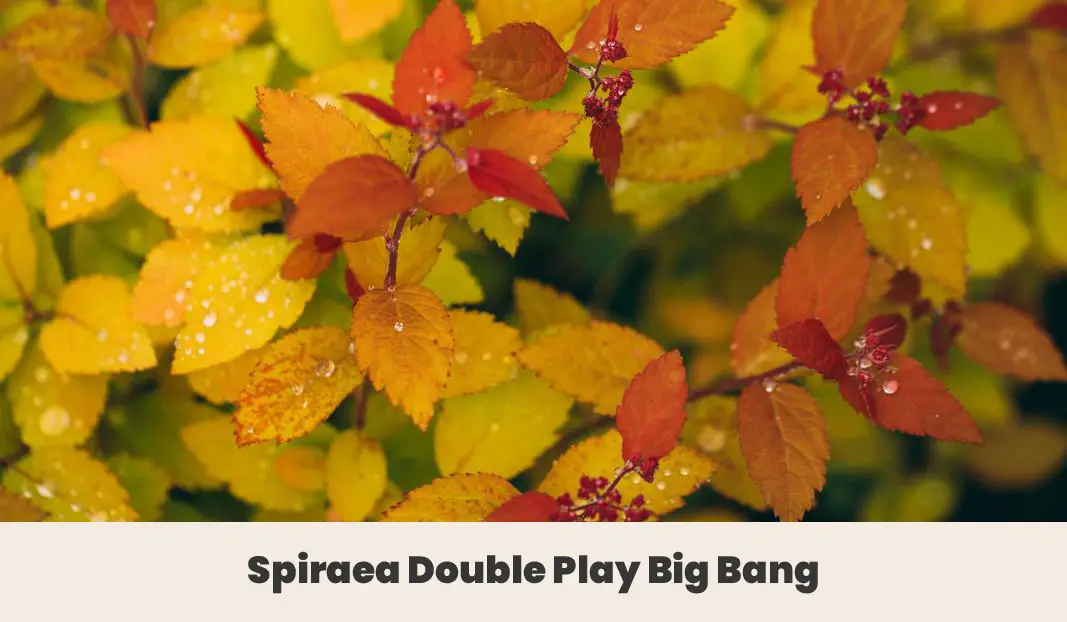
Spiraea Double Play Big Bang is a stunning shrub that boasts vibrant red and yellow leaves, making it a standout in any garden or landscape.
This low-maintenance shrub produces pink flowers in the spring and fall, and its colorful foliage remains throughout the year. It is a versatile plant that can be used in mixed borders, as a foundation plant, or as a specimen plant.
The Double Play Big Bang is also resistant to common plant diseases and pests, making it a great choice for those looking for a durable and long-lasting addition to their garden.
| Botanical Name: | Spiraea x |
| Growth Rate: | Very fast: up to 36 inches per year until established |
| Native Range: | Eastern China |
| Hardiness Zones: | Zone: 4-8 |
| Exposure: | Full sun to partial shade |
| Soil Needs: | Well-draining chalk, loam or sandy soil |
4. Red Majestic (Corylus avellana)

Red Majestic is a stunning shrub with deep red, almost burgundy-colored leaves that add a vibrant burst of color to any garden or landscape. This low-maintenance plant is easy to grow and thrives in a variety of soil conditions, making it an ideal choice for both novice and experienced gardeners.
Its compact size and rounded shape make it a great choice for creating borders or hedges, and its unique foliage provides year-round visual interest. In the spring, the Red Majestic produces small yellow flowers that add an additional layer of beauty to this already-striking plant.
| Botanical Name: | Corylus avellana |
| Growth Rate: | Fast: 12-24 inches per year |
| Native Range: | Europe and Western Asia |
| Hardiness Zones: | 4-8 |
| Exposure: | Full sun to partial shade |
| Soil Needs: | Well-draining chalk, loam or sandy soil |
5. Red Tip Photinia (Photinia × fraseri)

Red Tip Photinia is a popular shrub that is prized for its bright red leaves that emerge in the spring and remain vibrant throughout the year. This hardy plant is easy to grow and thrives in a variety of soil conditions, making it a versatile choice for gardeners of all levels.
Red Tip Photinia can be used as a hedge, border plant, or accent plant and looks particularly striking when planted in groups or clusters. In the spring, the Red Tip Photinia produces clusters of small white flowers that add an additional layer of beauty to this already stunning shrub.
| Botanical Name: | Photinia × fraseri |
| Growth Rate: | Fast: 12-24 inches per year |
| Native Range: | Hybrid of species from China and Japan |
| Hardiness Zones: | Zone 7-9 |
| Exposure: | Full sun to partial shade |
| Soil Needs: | Prefers fertile soil but can adapt to a wide range of conditions. |
6. Diablo Ninebark (Physocarpus opulifolius ‘Monlo’)

Diablo Ninebark is a stunning shrub with deep red-purple leaves that turn burgundy in the fall. This shrub is a great addition to any landscape design, as it provides a striking contrast against green foliage.
Its compact size and low maintenance requirements make it an ideal choice for small gardens and borders. The Diablo Ninebark is also known for its attractive white flowers, which bloom in early summer, adding to its visual appeal.
| Botanical Name: | Physocarpus opulifolius ‘Monlo’ |
| Growth Rate: | Fast: 12-24 inches per year |
| Native Range: | North America |
| Hardiness Zones: | Zone 3-8 |
| Exposure: | Full sun to partial shade |
| Soil Needs: | Well-draining fertile soil |
7. Smoke Bush (Cotinus Coggygria)
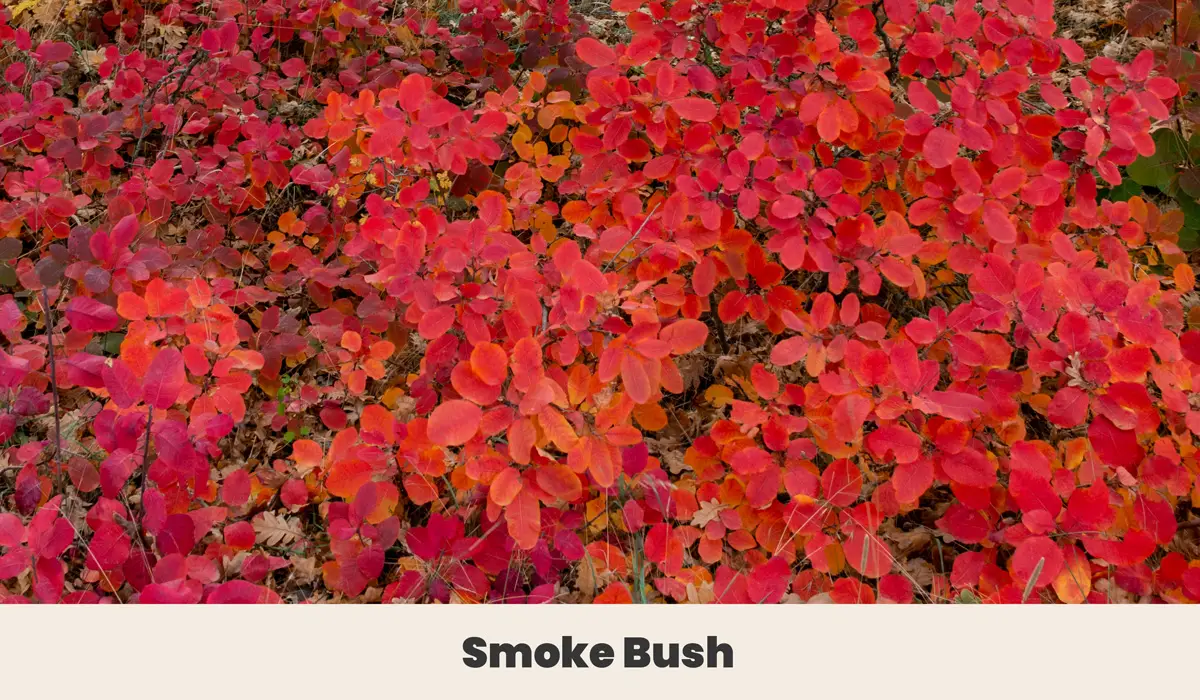
The Smoke Bush, also known as Cotinus Coggygria, is a stunning shrub with leaves that appear to be covered in a smoky haze, earning it its name. The leaves range from green to a deep, dark purple-red, making it a great addition to any garden needing a pop of color.
Additionally, the Smoke Bush is a relatively low-maintenance plant, making it a popular choice for gardeners of all skill levels. Its unique appearance and ease of care make it a standout in any landscape design.
| Botanical Name: | Cotinus coggygria |
| Growth Rate: | Fast: 12-24 inches per year |
| Native Range: | Southern Europe, Central China |
| Hardiness Zones: | Zone 5-8 |
| Exposure: | Full sun to partial shade |
| Soil Needs: | Well-draining soils with average composition |
8. Little Miss Maiden Grass (Miscanthus sinensis)
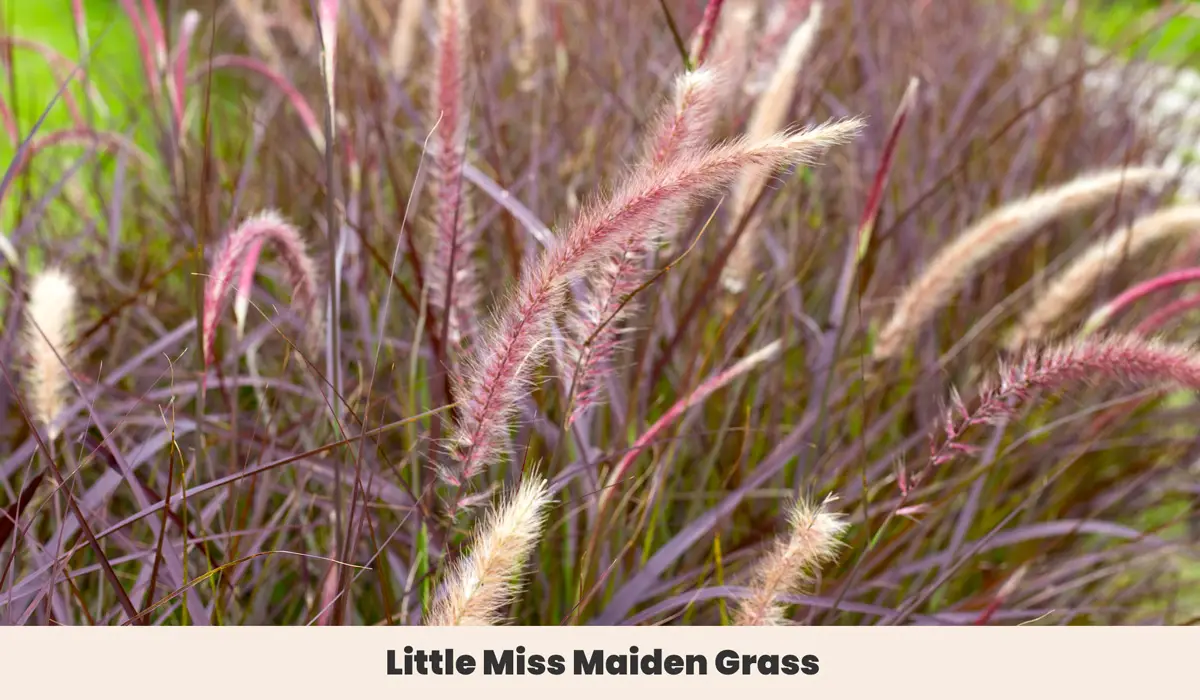
Little Miss Maiden Grass is a stunning shrub that adds elegance to any garden with its fine-textured leaves and feathery blooms. Its compact size makes it a great choice for small gardens and borders.
This low-maintenance plant is easy to grow and requires minimal upkeep. With its striking red leaves that turn to bronze in the fall, Little Miss Maiden Grass is a perfect choice for adding a pop of color to any landscape design.
| Botanical Name: | Miscanthus sinensis |
| Growth Rate: | Very fast: 12-36 inches per year |
| Native Range: | Eastern Asia |
| Hardiness Zones: | 5-9 |
| Exposure: | Full sun to partial shade |
| Soil Needs: | Well-draining soil with mixed composition |
9. Coral bells (Heuchera )
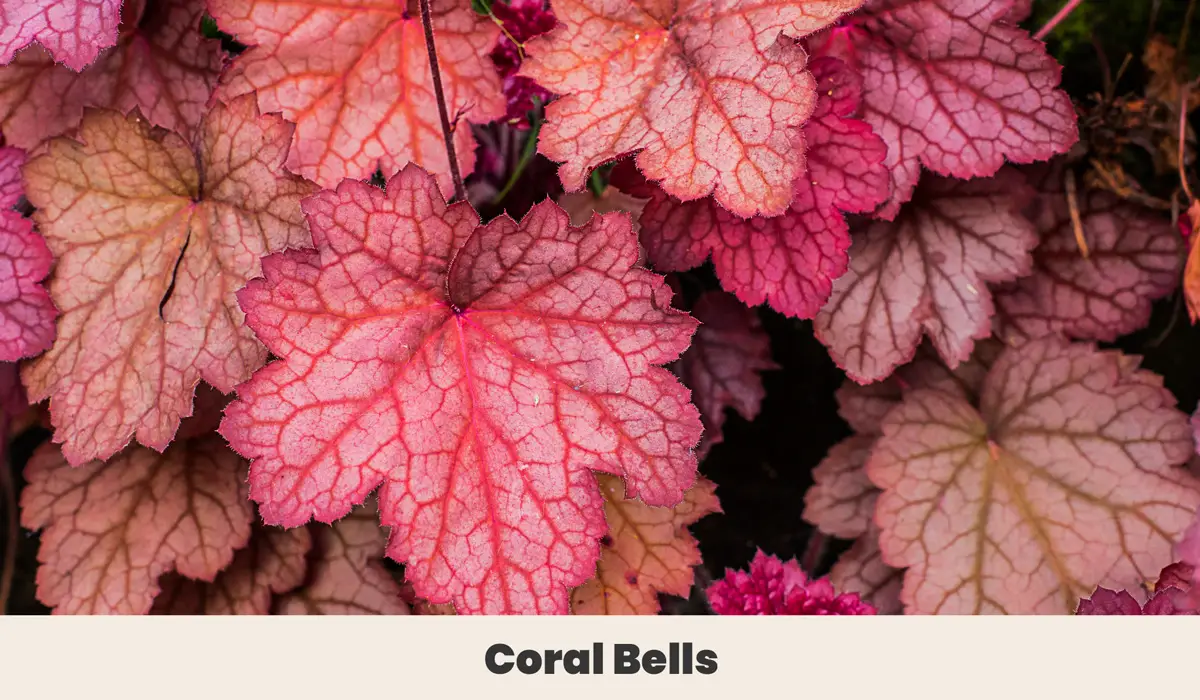
Coral bells are a popular perennial plant with stunning foliage that comes in various shades of red, dark green, and purple leaves. It is a great addition to any garden or landscape due to its low maintenance and ability to thrive in various conditions.
Coral bells are versatile plant that can be used as a border plant, ground cover, or as an accent in a mixed container. It also produces delicate, bell-shaped flowers on tall spikes that add to its visual appeal.
| Botanical Name: | Heuchera |
| Growth Rate: | Moderate: 6-12 inches per year |
| Native Range: | North America |
| Hardiness Zones: | Zone: 3-9 |
| Exposure: | Full sun to partial shade |
| Soil Needs: | Well-draining rich soil |
10. Fairy Wing ‘After Midnight’ (Barrenwort)

Fairy Wing ‘After Midnight’ is a stunning shrub with deep, dark purple leaves that look almost black. Its foliage has a delicate, fairy-like appearance, which is enhanced by its pink flowers in the summer.
This low-maintenance plant is perfect for borders, rock gardens, or as a ground cover. Its unique color and texture make it a standout in any landscape design, adding depth and interest to your garden.
| Botanical Name: | Barrenwort |
| Growth Rate: | Slow: 6-10 inches per year |
| Native Range: | China, Japan, Korea |
| Hardiness Zones: | Zone: 4-8 |
| Exposure: | Partial to full shade |
| Soil Needs: | Well-draining loose soil that is slightly acidic |
11. Black Lace Elderberry (Sambucus nigra)
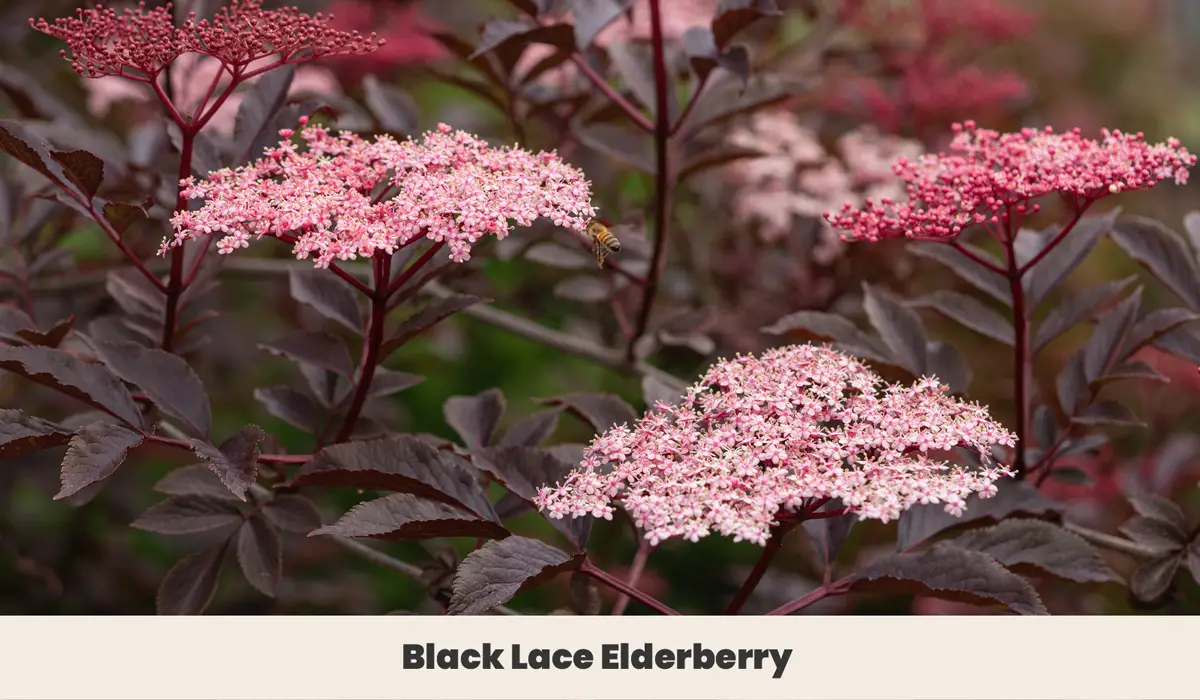
The Black Lace Elderberry is a stunning shrub with deeply cut, dark purple leaves that make a dramatic statement in any garden or landscape. It also produces clusters of pinkish-white flowers in the spring, followed by dark berries in the summer.
This hardy plant is easy to grow and low maintenance, making it a great choice for gardeners of all skill levels. Use it as a focal point in a mixed border or as a hedge for added privacy and beauty.
| Botanical Name: | Sambucus nigra |
| Growth Rate: | Moderate: 12-24 inches per year |
| Native Range: | Europe and Western Asia |
| Hardiness Zones: | Zone: 4-7 |
| Exposure: | Full sun to partial shade |
| Soil Needs: | Moist, well-draining soil |
Final Thoughts
In conclusion, if you’re looking to add a touch of bold color to your garden or landscape design, these eleven shrubs with red leaves all year round are an excellent choice.
With careful consideration of each plant’s needs for sunlight, soil, and water, you can enjoy their year-round beauty and enhance the overall aesthetics of your outdoor space. Whether you’re a seasoned gardener or a beginner, these shrubs are a great way to add visual interest and variety to your landscape.

Before you go!
11 Trees with Heart Shaped Leaves
12 Low-Light Outdoor Plants: Illuminate Your Garden With Shade Loving Plants
21 Privacy Fence Ideas For Your Yard
Best Indoor Greenhouse